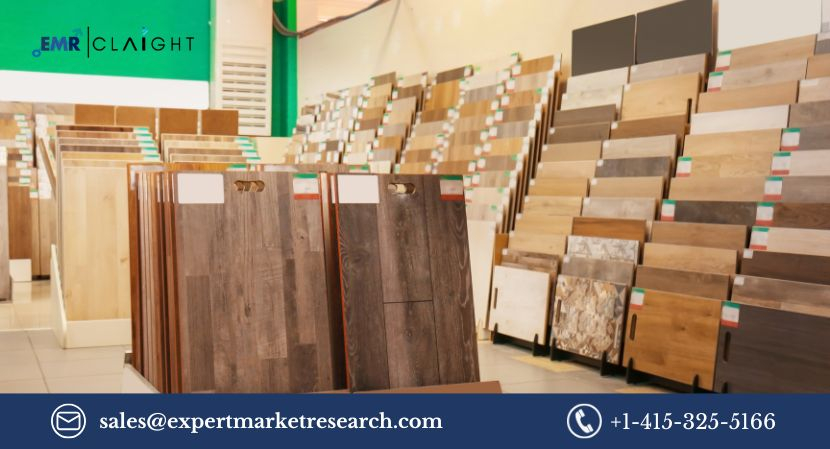The Cross-Laminated Timber (CLT) market has gained significant momentum in recent years and is projected to continue its upward trajectory, reaching a market value of USD 5161.43 million by 2034 from USD 1753.55 million in 2024. With a projected Compound Annual Growth Rate (CAGR) of 11.40% during the forecast period of 2025-2034, the market is poised for substantial expansion. The demand for CLT is increasing due to its sustainable properties, superior strength-to-weight ratio, and its growing popularity in eco-friendly construction projects.
This article provides a comprehensive overview of the Cross-Laminated Timber market, including its size, share, growth trends, opportunities, and challenges, along with an analysis of key competitors shaping the market landscape.
Overview of the Cross-Laminated Timber Market
Cross-Laminated Timber (CLT) is an engineered wood product made by stacking layers of wood planks perpendicular to each other and then bonding them using strong adhesive. This unique construction material has gained popularity in the building and construction industry due to its high strength, durability, and sustainability. CLT panels can be used for a variety of applications, including walls, floors, roofs, and ceilings in both residential and commercial buildings.
The growing focus on sustainability in construction practices, coupled with the increasing demand for environmentally friendly building materials, has driven the adoption of CLT. Moreover, its ability to reduce carbon footprints, improve energy efficiency, and shorten construction timelines has made it a preferred choice for modern construction projects.
In addition to its eco-friendly benefits, CLT offers a variety of advantages over traditional construction materials like steel and concrete. It is lightweight, easy to handle, cost-effective, and offers excellent thermal and acoustic insulation. These properties make CLT an ideal choice for a range of applications, from high-rise buildings to low-energy homes and temporary structures.
Get a free sample request: https://www.expertmarketresearch.com/reports/cross-laminated-timber-market-report/requestsample
Size & Share of the Cross-Laminated Timber Market
The global cross-laminated timber market reached a value of USD 1753.55 million in 2024. The market is anticipated to grow significantly at a CAGR of 11.40% during the forecast period of 2025-2034. By 2034, the market is expected to attain a valuation of USD 5161.43 million.
Market Share by Region
-
North America: North America is expected to dominate the global CLT market due to the rapid adoption of sustainable building materials and supportive government policies promoting green construction. The United States and Canada are key contributors to this region, with an increasing number of CLT-based projects being initiated.
-
Europe: Europe is another major market for CLT, with countries like Germany, Sweden, and Austria leading the adoption of cross-laminated timber. Europe is at the forefront of sustainable construction practices, with extensive use of CLT in residential, commercial, and institutional buildings.
-
Asia Pacific: The Asia-Pacific region is expected to experience rapid growth in the CLT market due to increasing urbanization, a focus on sustainable construction, and rising awareness of environmental impact. Countries like Japan, South Korea, and China are anticipated to be major markets for CLT.
-
Rest of the World: Other regions, such as Latin America, the Middle East, and Africa, are also projected to witness steady growth, albeit at a slower pace compared to the leading regions. However, as sustainability trends grow globally, the adoption of CLT in these regions is likely to increase.
Market Segmentation
-
By Application: CLT is used in various applications, including residential buildings, commercial buildings, institutional structures, and industrial buildings. The commercial buildings segment holds the largest share of the market due to the rising demand for green office spaces, hotels, and other commercial infrastructures.
-
By End-User: The primary end-users of CLT are the construction and building industry, architects, contractors, and developers who seek innovative, sustainable materials. The increasing trend toward environmentally friendly building designs is propelling the demand for CLT in both new construction projects and renovations.
-
By Type: The market is also segmented based on the type of CLT, including regular CLT, fire-resistant CLT, and acoustic CLT. The demand for fire-resistant CLT is growing due to its enhanced safety features, particularly in multi-story buildings.
Market Dynamics & Trends
Drivers of Market Growth
-
Sustainability and Eco-Friendly Construction: One of the primary drivers of the cross-laminated timber market is the increasing demand for sustainable, eco-friendly building materials. CLT is a renewable, biodegradable, and carbon-neutral material that aligns with the growing emphasis on sustainability in the construction industry.
-
Energy-Efficient Buildings: With the rising focus on energy efficiency, CLT is gaining popularity due to its superior thermal insulation properties. CLT panels help reduce heating and cooling costs, making them an attractive option for energy-efficient buildings.
-
Government Regulations and Incentives: Many countries around the world are introducing regulations and incentives to promote the use of sustainable building materials. Policies encouraging green construction and the reduction of carbon emissions have created favorable conditions for the growth of the CLT market.
-
Technological Advancements: Ongoing advancements in manufacturing processes and technologies are improving the performance and affordability of CLT. For example, new techniques for bonding wood layers together are enhancing the strength and fire resistance of CLT panels, making them suitable for a wider range of applications.
Emerging Trends
-
Green Building Certifications: The adoption of green building standards such as LEED (Leadership in Energy and Environmental Design) and BREEAM (Building Research Establishment Environmental Assessment Method) is driving the demand for sustainable materials like CLT. Many developers are opting for CLT to meet these certification standards.
-
CLT in High-Rise Buildings: CLT's ability to provide the strength and stability required for tall structures has led to its adoption in high-rise buildings. The trend of "mass timber" construction is growing, with several tall buildings being constructed using CLT panels to reduce carbon footprints while maintaining structural integrity.
-
Customization and Design Flexibility: The growing trend of customized construction designs is leading to greater demand for CLT. Architects and designers are incorporating CLT into a variety of designs, from modern homes to innovative public structures, to achieve both aesthetic appeal and sustainability.
Growth Prospects for the Cross-Laminated Timber Market
The future growth of the CLT market appears robust, driven by factors such as urbanization, rising demand for energy-efficient buildings, and an increasing focus on sustainability. Some of the key growth opportunities for the CLT market include:
-
Urbanization and Infrastructure Development: Rapid urbanization, particularly in emerging economies, is driving the need for sustainable construction materials. As cities expand, the demand for green building materials like CLT is expected to rise.
-
Collaboration with Architects and Designers: The expansion of the CLT market will be fueled by collaborations between CLT manufacturers and architects, as well as the development of new design techniques that incorporate CLT's unique properties.
-
Adoption in Non-Residential Sectors: CLT is not only being used in residential projects but is also expanding into commercial, industrial, and public buildings. This diversification of applications is expected to provide significant growth opportunities for the market.
Market Opportunities and Challenges
Opportunities
-
Expanding Adoption in Emerging Economies: As awareness of CLT grows in emerging economies, there are significant opportunities for manufacturers to expand their footprint in regions like Asia Pacific, Latin America, and Africa.
-
Increasing Demand for Modular Construction: The rise of modular construction, where pre-fabricated components are assembled on-site, presents an opportunity for CLT to be used in the production of modular homes and buildings. The speed and efficiency of modular construction align well with the benefits of CLT.
-
Sustainability Certifications: As the demand for green buildings rises, CLT offers a unique advantage due to its sustainability credentials. Manufacturers can capitalize on the trend by obtaining environmental certifications to appeal to environmentally conscious consumers.
Challenges
-
High Initial Costs: While CLT offers long-term cost benefits, the initial cost of CLT materials can be higher than traditional construction materials such as concrete and steel. This could be a barrier for some construction projects.
-
Supply Chain and Availability: The availability of raw materials and the complexity of manufacturing CLT panels may present challenges in ensuring a steady and cost-effective supply. Manufacturers must optimize their production capabilities to meet the increasing demand.
-
Fire Resistance Concerns: Although fire-resistant CLT panels are available, fire safety remains a concern in the adoption of CLT for large-scale construction projects. Addressing these concerns through improved materials and building codes will be crucial for the continued growth of the market.
Competitor Analysis
The global cross-laminated timber market is highly competitive, with several established players leading the industry. Some of the key players in the market include:
-
Stora Enso Group: Stora Enso is a leading player in the CLT market, offering a wide range of CLT products for both residential and commercial applications. The company's commitment to sustainability and innovation has made it a key player in the market.
-
Binderholz GmbH: Binderholz is a leading manufacturer of engineered wood products, including CLT. The company's high-quality CLT panels are widely used in construction projects across Europe and other regions.
-
Mayr Melnhof Holz Group: Mayr Melnhof Holz is a key manufacturer of CLT, with a strong presence in Europe. The company's focus on sustainability and the development of new CLT technologies has helped it expand its market share.
-
Schilliger Holz AG: Schilliger Holz specializes in the production of CLT panels and has a strong reputation for high-quality, environmentally friendly building materials.
-
KLH Massivholz GmbH: KLH Massivholz is one of the leading suppliers of CLT products, with an extensive product portfolio catering to residential, commercial, and public construction projects.
Toy Manufacturers:
https://www.expertmarketresearch.com/articles/top-toys-companies

